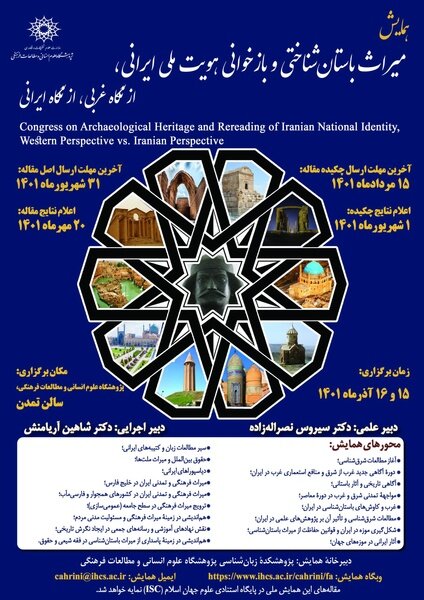Congress to explore Iranian national identity from multiple perspectives

TEHRAN – A host of archaeologists, historians, and anthropologists will exchange views on the Iranian national identity in a two-day congress to be held on December 6 and 7.
Named “Congress on Archaeological Heritage and Rereading of Iranian National Identity” the event seeks to compare and contrast the Western perspective with the Iranian outlook over the history of Iran, according to organizers.
“Archaeological excavations as a ‘new’ knowledge have transformed the historiography of us and many countries. This transformation of historiography has made us face a new look toward the past, whether it has affected our identity or not,” the organizers said in a press release on Tuesday.
“In the past two hundred years, the confrontation between us and the West has intensified, and their view about us has been based on their own interests and knowledge, which has had benefits and disadvantages.”
Now, the congress seeks to discuss international archaeological studies and their importance in the new historiography of Iran.
A cradle of civilizations, Iran has played a significant role as a source of innovation, being a melting pot and cultural powerhouse connecting Africa, Asia, and Europe. Ancient Iran, also known as Persia, was a historic region of southwestern Asia that is only roughly coterminous with modern Iran. The term Persia was used for centuries, chiefly in the West, to designate those regions where Persian language and culture predominated, but it more correctly refers to a region of southern Iran formerly known as Persis, alternatively as Pars or Parsa, modern Fars.
In the time of the Achaemenian dynasty (559–330 BC), the ancient Greeks first encountered the inhabitants of Persis on the Iranian plateau, when the Achaemenids—natives of Persis—were expanding their political sphere. The Achaemenids were the dominant dynasty during Greek history until the time of Alexander the Great, and the use of the name Persia was gradually extended by the Greeks and other peoples to apply to the whole Iranian plateau. This tendency was reinforced with the rise of the Sasanian dynasty, also native to Persis, whose culture dominated the Iranian plateau until the 7th century CE. The people of this area have traditionally referred to the region as Iran, “Land of the Aryans,” and in 1935 the government of Iran requested that the name Iran be used instead of Persia. The two terms, however, are often used interchangeably when referring to periods preceding the 20th century.
AFM
Leave a Comment